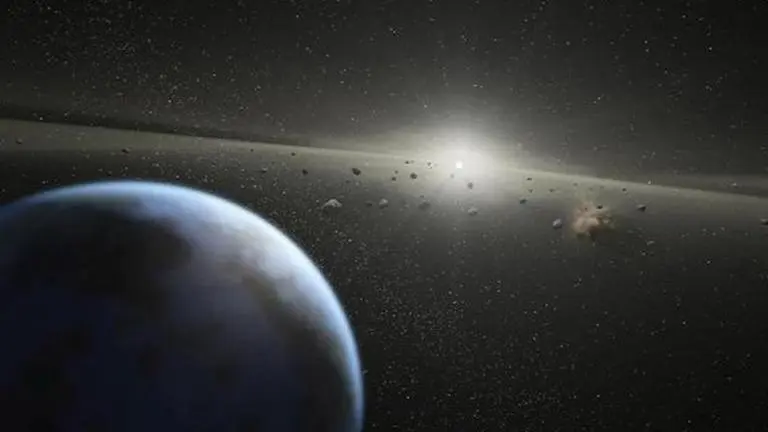Updated 2 October 2022 at 18:59 IST
Russian experts spot asteroid bigger than Rome's Colosseum barreling towards Earth
An asteroid, roughly 500 m in width, is hurtling toward Earth, said experts from the Keldysh Institute of Applied Mathematics of Russia’s Academy of Sciences.
- Science News
- 3 min read

Experts from the Keldysh Institute of Applied Mathematics of Russia’s Academy of Sciences confirmed that a massive asteroid is hurtling toward Earth to make its closest approach this week. Named 2022 SE37, the asteroid is roughly half a-kilometre wide and completes one orbit around the sun every 3.44 years, Sputnik confirmed.
On their official Telegram handle, the Keldysh Institute confirmed that the asteroid, despite being classified as ‘potentially hazardous’ does not pose a threat to Earth now or in the foreseeable future. An asteroid is classified as ‘potentially hazardous’ when it is larger than 460 feet (140 m) in size and comes within 75 lakh kilometres from Earth. The 2022 SE37 clearly makes the cut-off as it measures roughly 500 metres, which makes it significantly bigger than Rome’s Colosseum which is 190 by 155 metres in width.
(An illustration of the asteroid belt; Image: NASA)
According to the experts, the incoming asteroid was spotted using two observatories, one in Russia’s Kochevanchik village and another from Kuban State University. According to NASA, another asteroid named 2018 ER1, which measures 26 metres wide, will skim past our planet from a distance of over 56 lakh km on October 2. Moreover, October 3 would see the asteroid 2022 SL28 measuring 10 metres in width make its closest approach from a distance of more than 16 lakh km from our planet.
Advertisement
The rising interest in asteroids
While asteroids have lingered around for billions of years, they have been a subject of interest for astronomers now. The reason for this amplified interest is their ability to preserve clues that could teach scientists more about the origin of our universe. In the recent past, space agencies from the US, China and Japan are sending probes to space rocks for sample collection.
NASA's OSIRIS-REx mission, the Japan Aerospace Exploration Agency's (JAXA) Hayabusa2 and China's Tianwen 2 mission are all dedicated to sampling asteroids. While China's mission is scheduled for launch later this decade, NASA's mission launched in 2016 is on its way to delivering the samples by 2023 whereas the Hayabusa2 probe already did in December 2020.
Advertisement
IMPACT SUCCESS! Watch from #DARTMIssion’s DRACO Camera, as the vending machine-sized spacecraft successfully collides with asteroid Dimorphos, which is the size of a football stadium and poses no threat to Earth. pic.twitter.com/7bXipPkjWD
— NASA (@NASA) September 26, 2022
Besides collecting soil samples from space rock, NASA is also developing technologies to protect our planet in case an extinction-level asteroid heads for an unexpected collision. To develop this technology, the agency launched the DART (Double Asteroid Redirection Test) mission last November and was completed on September 27. Tap here to read all about it.
Published By : Harsh Vardhan
Published On: 2 October 2022 at 18:59 IST

